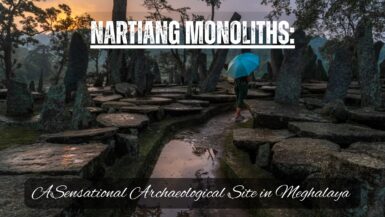The Lothal of today is an obscure site located near the village of Saragwala in Ahmedabad district of Gujarat. Rewind to 2400 BC and we have Lothal as one of the most thriving cities of the Indus Valley Civilization.

Most of us were introduced with Lothal in our history books at school when we had started to learn about the Indus Valley Civilization. Also known as the Harappan Civilization, it was one of the first four human civilizations. Majority of the prominent excavated sites of this civilization lies in present-day Pakistan. India boasts discovery of a whopping 925 Harappan sites, among which Lothal and Dholavira in Gujarat and Kalibangan in Rajasthan are most well-known.
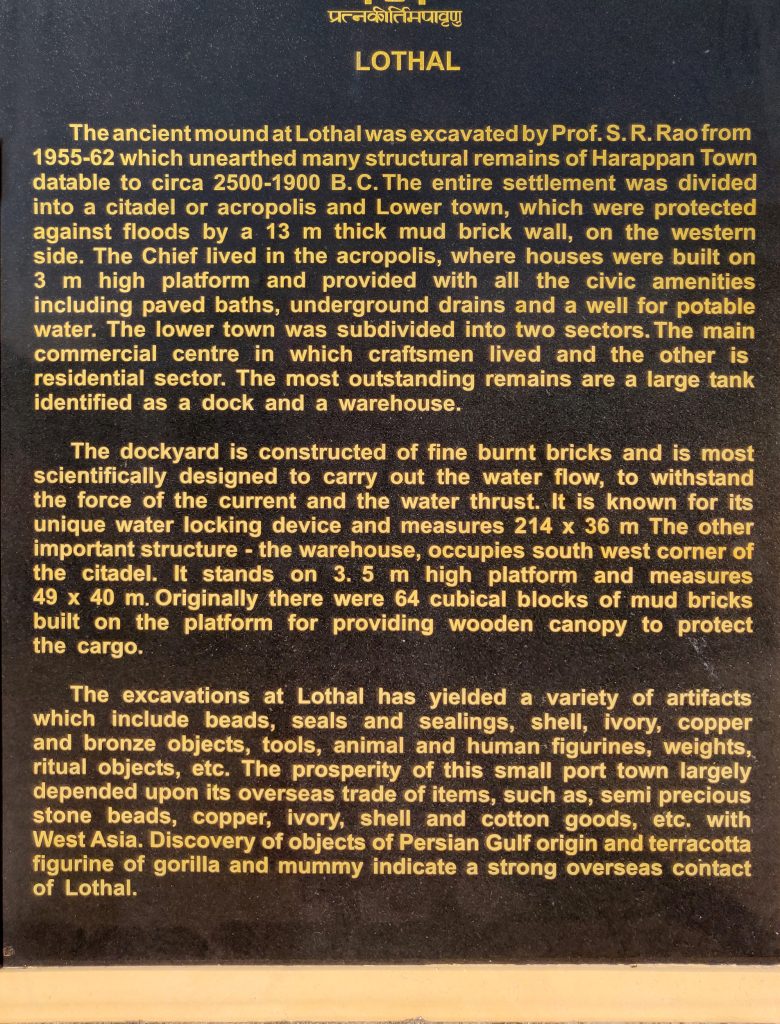
Lothal has featured in my travel bucket-list since forever. So, when we were planning our itinerary for Gujarat, which you can find here, I had reserved an entire day for travelling and exploring this Harappan town. The information about present-day Lothal is scarce, hence we decided to pen down our experience in a blog-post. So, let’s take you to a walk to remember in Lothal.
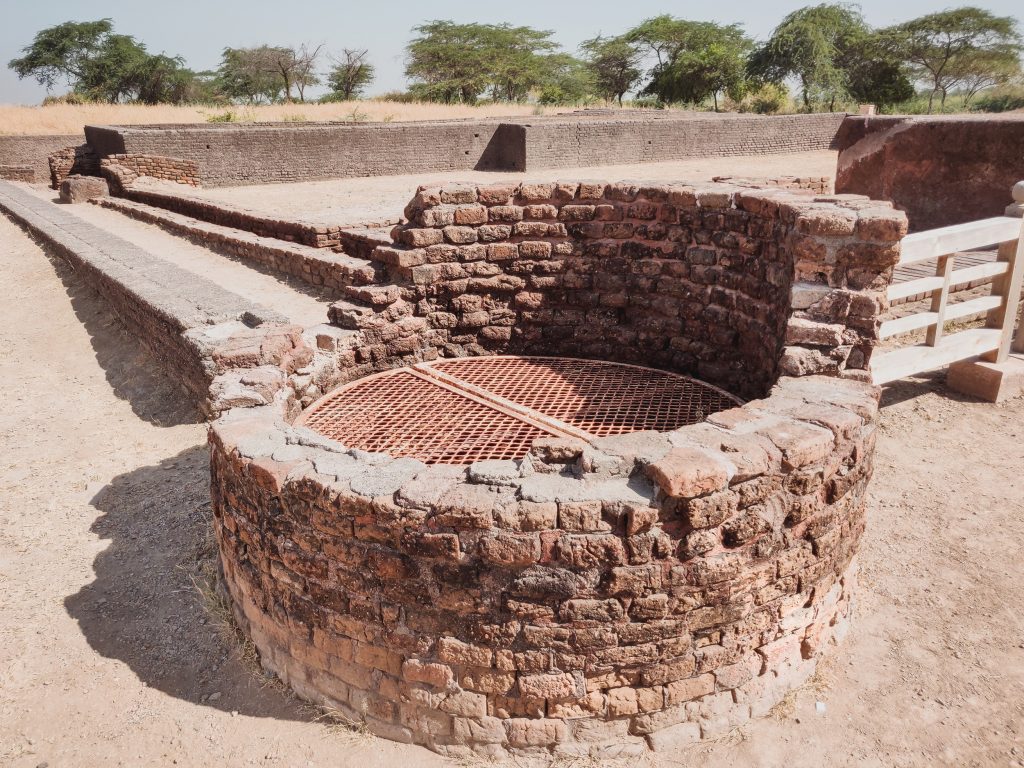
Table of Contents
How to reach :
Lothal is just 80 kilometres away from Ahmedabad. The smooth NH-47 connects it with Ahmedabad, Bhavnagar and Rajkot.
- Lothal is very well – connected by road. The best way to reach is to hire a rented vehicle from Ahmedabad, which will take around 1.5 hours to reach the excavated site.
- The nearest railway station is Bhurkhi. Any Bhavnagar bound train will bring you to Bhurkhi, from where you can take a ‘Chhakda’ to reach Lothal.
- Buses are infrequent, unreliable and the route complicated. Hence we won’t be suggesting taking buses for reaching Lothal.
History of Lothal:
The word ‘Lothal’ roughly translates into “mound of the dead”. Discovered in 1954, it was the southernmost center of Harappan Civilization. It was the prosperous port city of the subcontinent’s oldest civilization. Gradually, it turned into a booming centre of trade and industry, dealing in beads, gems and valuable ornaments, which reached as far as West Asia.
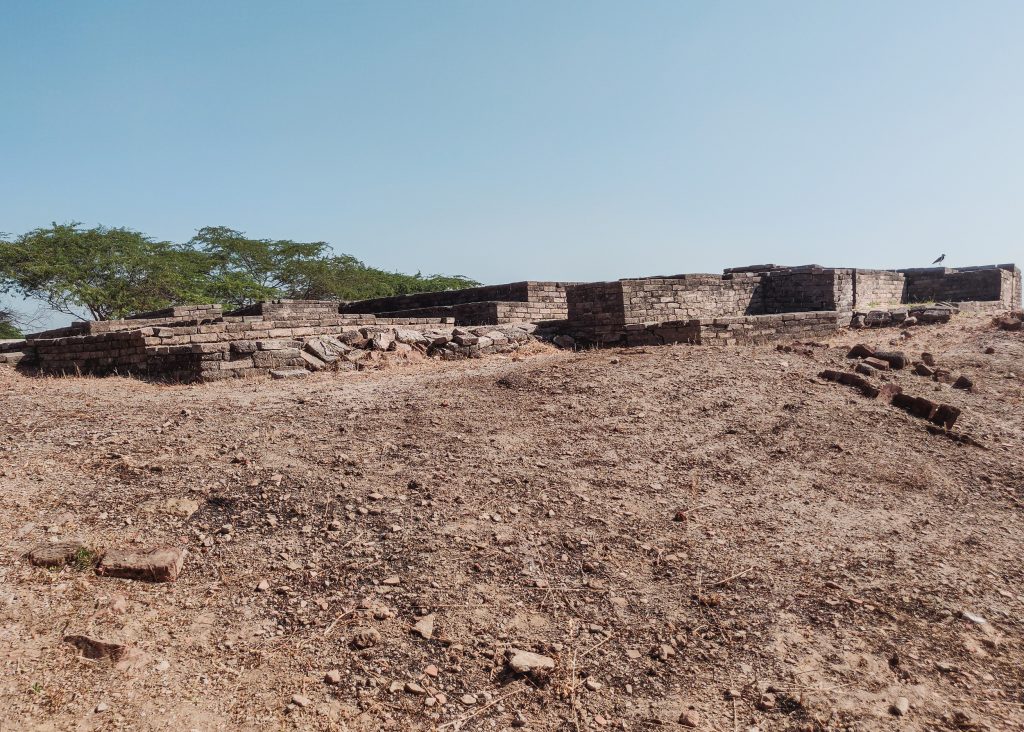
Innovative and meticulous town planning, an extensive underground drainage system and an astonishing precision of standardized weights and measures characterize Lothal, like its other Harappan counterparts.
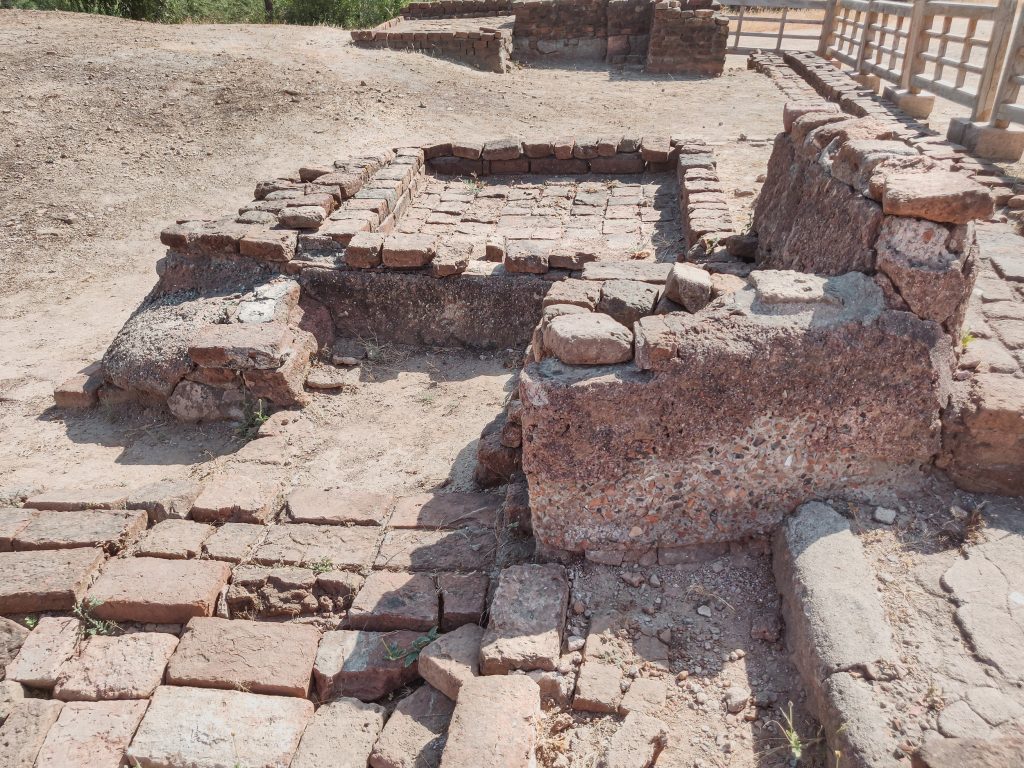
However, Lothal owes its fame mostly to the presence of a dockyard. Regarded as the earliest known dock of the world, it connected the city to an ancient and lost course of Sabarmati river. The economy flourished, as cargoes traveled to and fro far-fetched lands, thanks to the pioneering knowledge of the Harappans about marine hydraulics.
The experience of Lothal:
Unlike other historical hotspots, Lothal boasts no magnificent forts or splendid temples with intricate carvings and frescoes. Rather Lothal welcomes you with a semi-arid, sweltering landscape surrounded with savannah-esque grasslands and dotted with its and bits of Harappan ruins. The remains of this great civilization comprise of rows of kiln-burnt brick structures, which seem almost incomprehensible and rather unappealing at first sight. But all you need is to give your imagination a free-hand here, for there is more to Lothal than meets the eyes. Lothal is not for what is present there now, but for helping you to envision what once was.
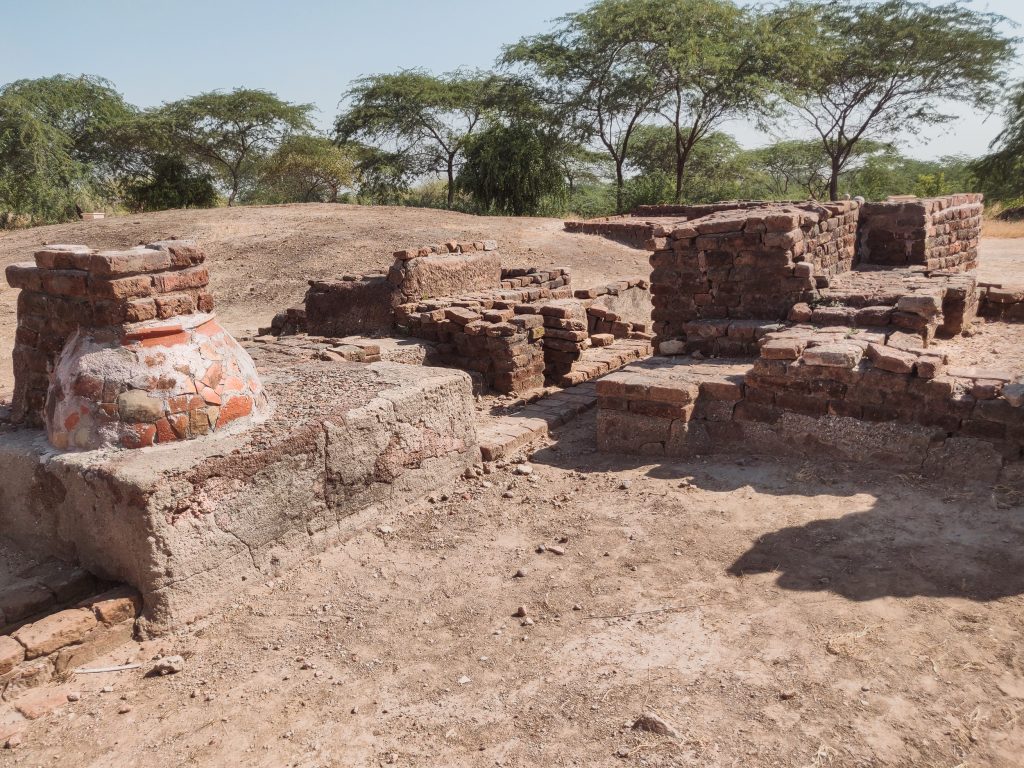
1. The museum:
Start your visit with surveying the well-curated archaeological museum of Lothal, which will give you a thorough insight into the nuances of Lothal and broaden your imagination during your field trip to the site.
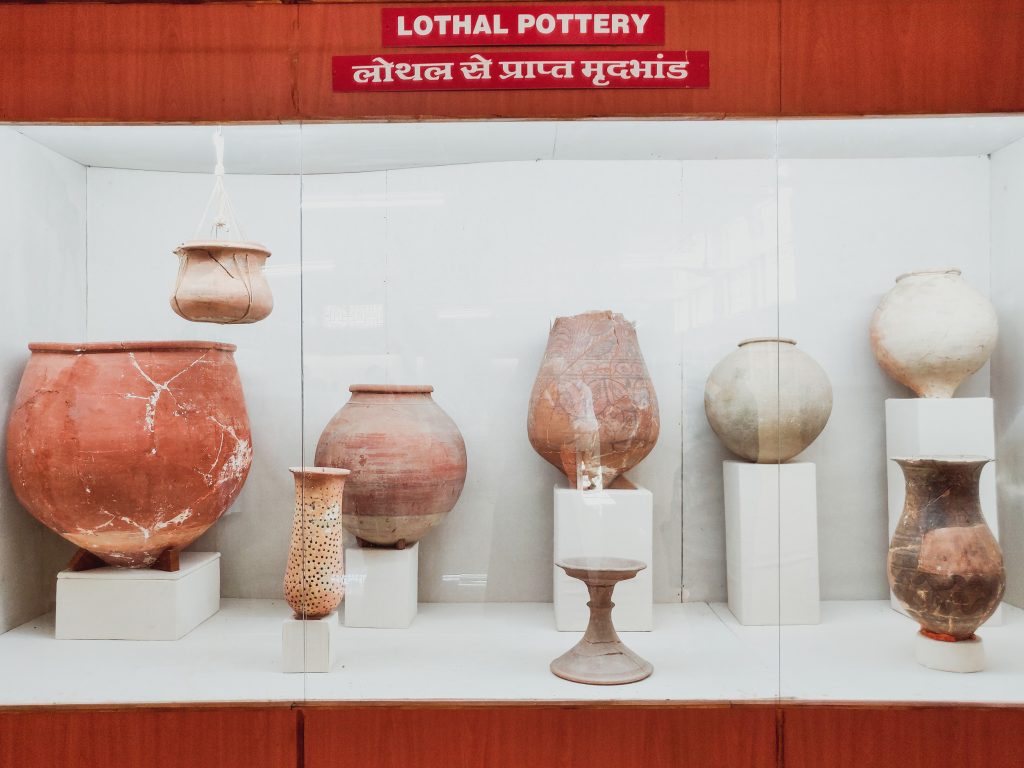
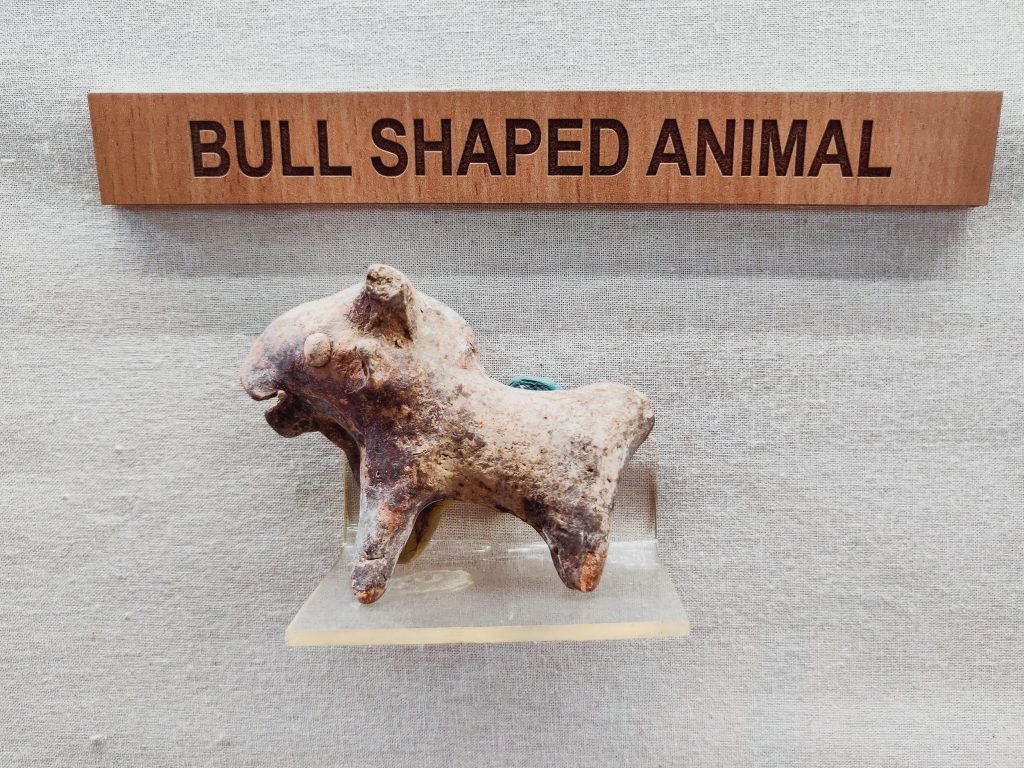
The following activities inside the museum will help to understand the characteristic features of Lothal:
- Display of a limestone sculpture of Lothal, detailing its incredible town planning.
- An artist’s impression of Lothal during its heyday.
- An informative 30-minutes video, which minutely describes Lothal’s history.
- The curators and staffs of the museum are quite helpful in interpreting the significance of various artifacts unearthed from Lothal.
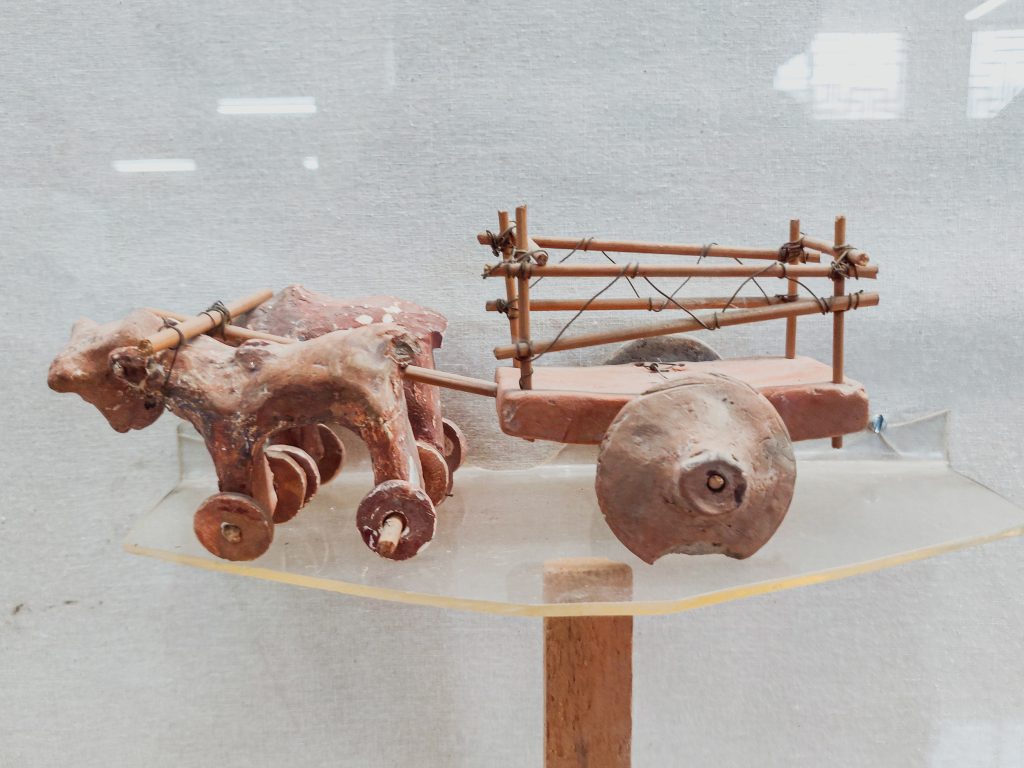
Built in 1976, the museum displays a vast number of astounding artifacts found during excavation. There is a huge collection of various potteries, seals, terracotta ornaments, toys, animal and human figurines, ritual objects and pieces of jewelry made of conch and seashells. The mastery with which the potters, artisans, and craftsmen made these artifacts will leave you speechless.
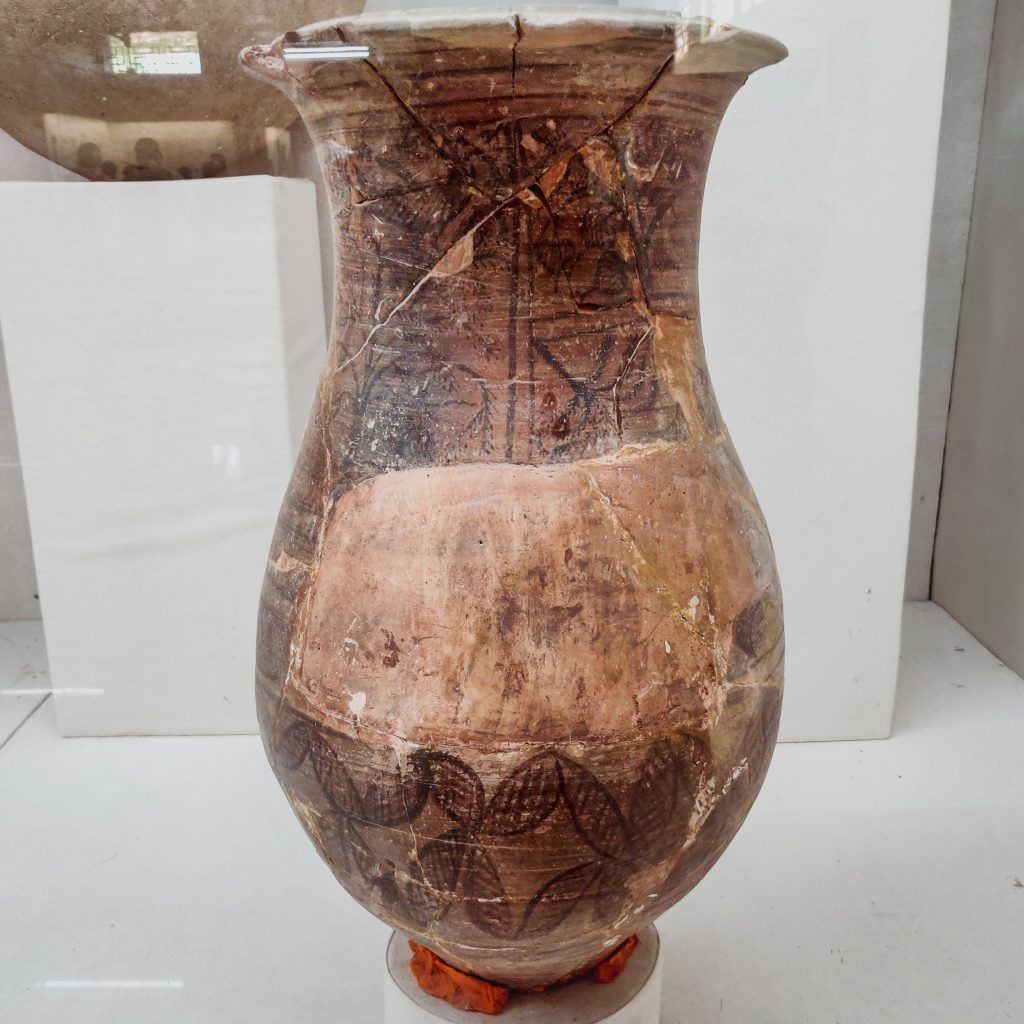
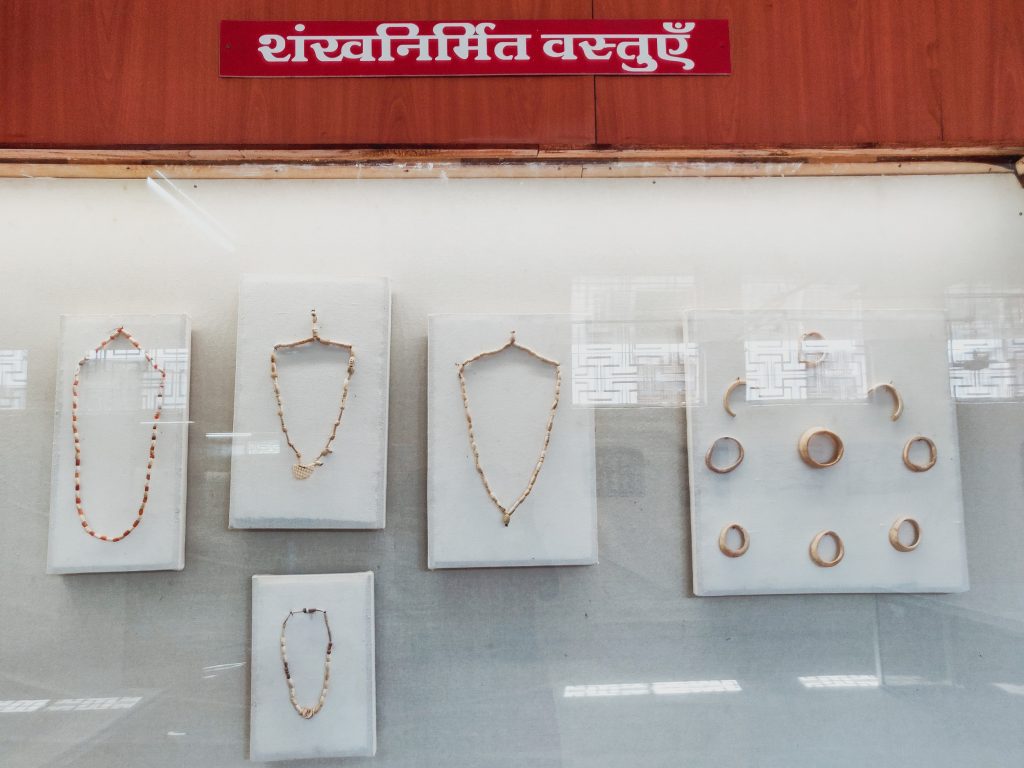
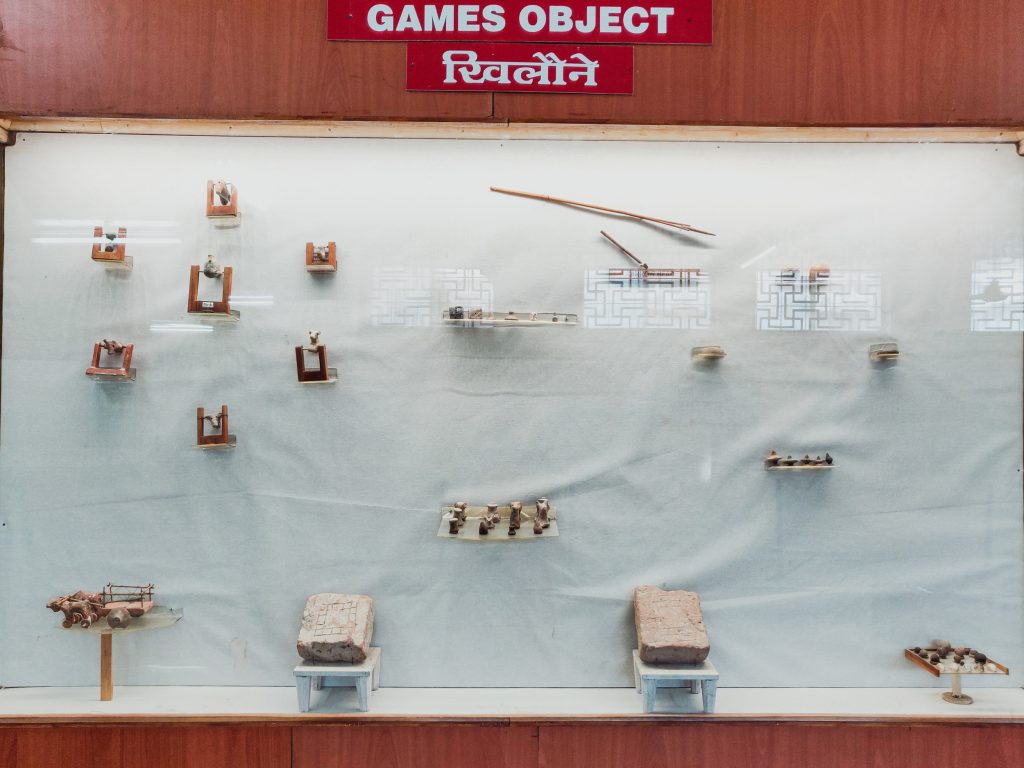
Another interesting item displayed here is the twin skeletons discovered from the double burial site, which is unique to Lothal.
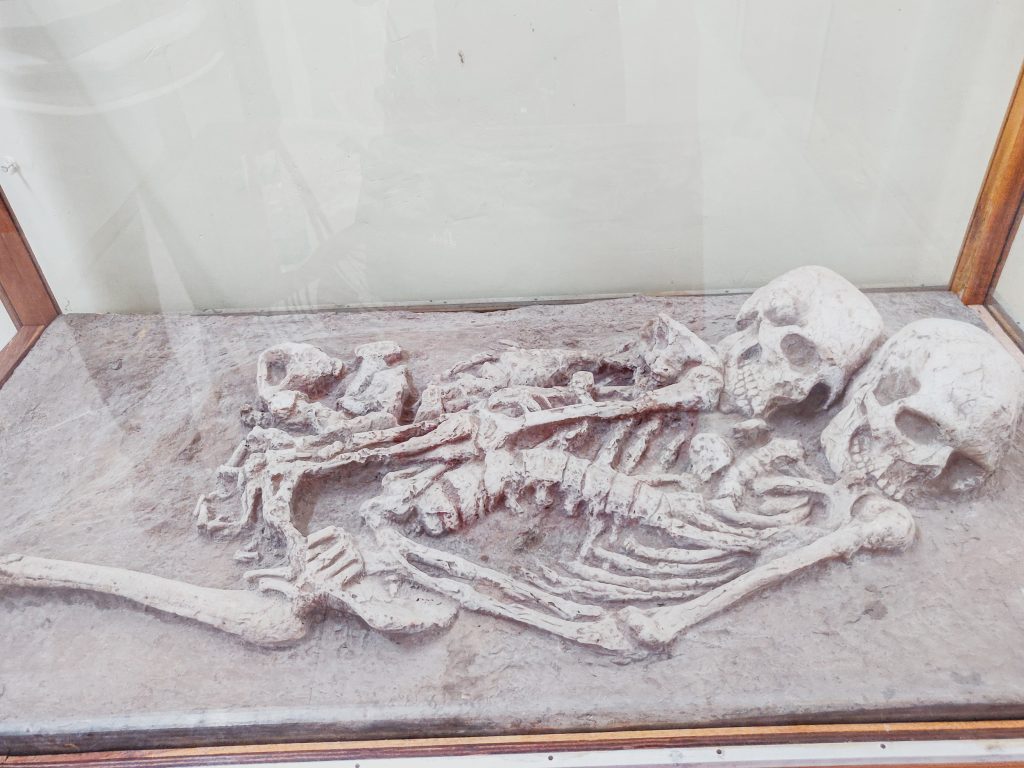
After scouting the museum, it’s time for a field trip around the excavation site for having a hands-on experience of Lothal.
2. The dockyard & warehouse:
The first thing that catches attention on entering the site is the celebrated dockyard. It is the predominant sight of the site, measuring 35 metres from east to west and 215 metres from north to south. Located on the eastern side, the trapezoidal structure of the dockyard shows a meticulous understanding of tidal behaviors, principles of hydraulics and effect of seawater on kiln – burnt bricks.
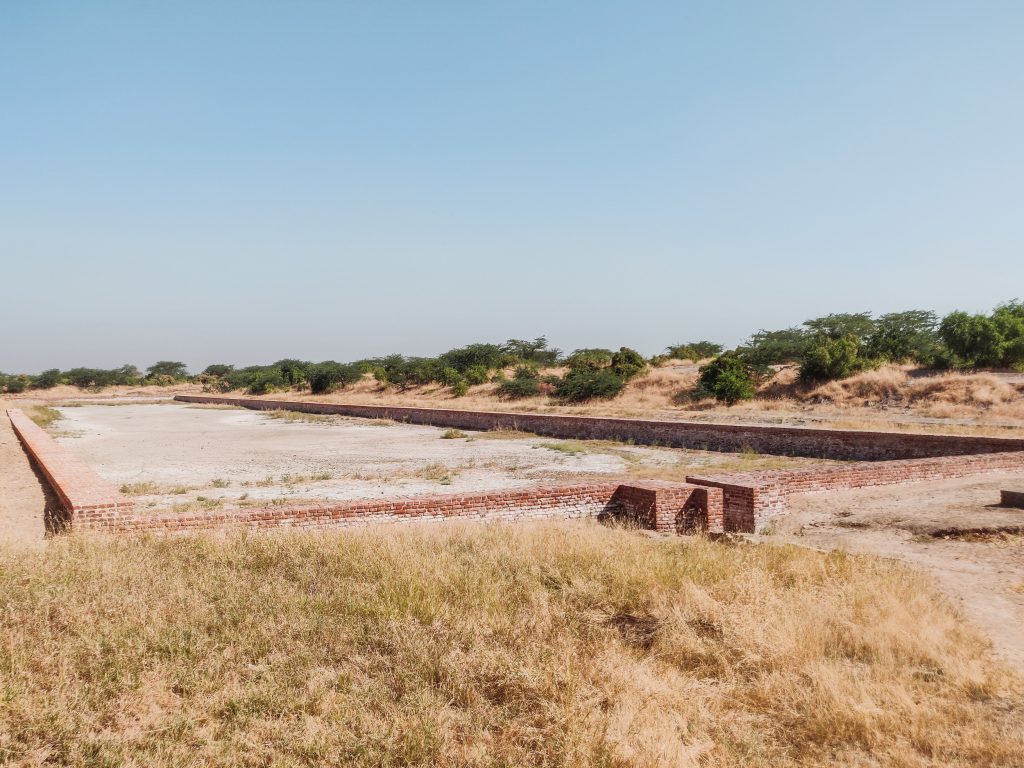
Take a slow walk on the plain of the dockyard and feel the ecstasy at the thought that, about 5,000 years ago, ships from faraway lands anchored here on the very ground on which you are standing today.
From dockyard, follow the mudbrick wharf to reach the warehouse. The warehouse consisted of 64 cubical rooms, each measuring about 3.5 metres and connected by 1.2 metres wide passages.
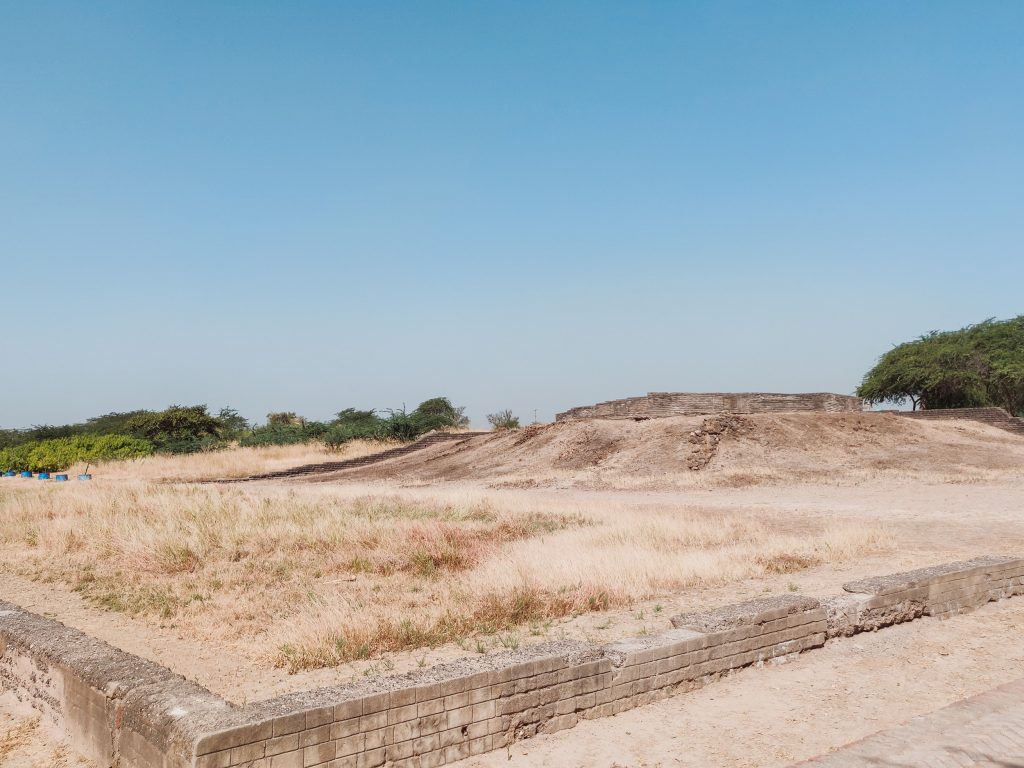
3. The Acropolis or Upper Town:
Next to the warehouse lies the acropolis or upper town. Like its other Harappan counterparts, Lothal had two parts – acropolis or citadel or upper town and lower town. The citadel was the centre of the town and heart of its political and commercial activities. It was built on a high plinth to protect it from floods. The upper town bears remnants of paved, wide streets, extensive drainage and sanitation system, rows of bathing platforms, cooking blocks, pot furnaces and wells for potable water. The existing ruins signify that it was an extremely well – planned Harappan town.
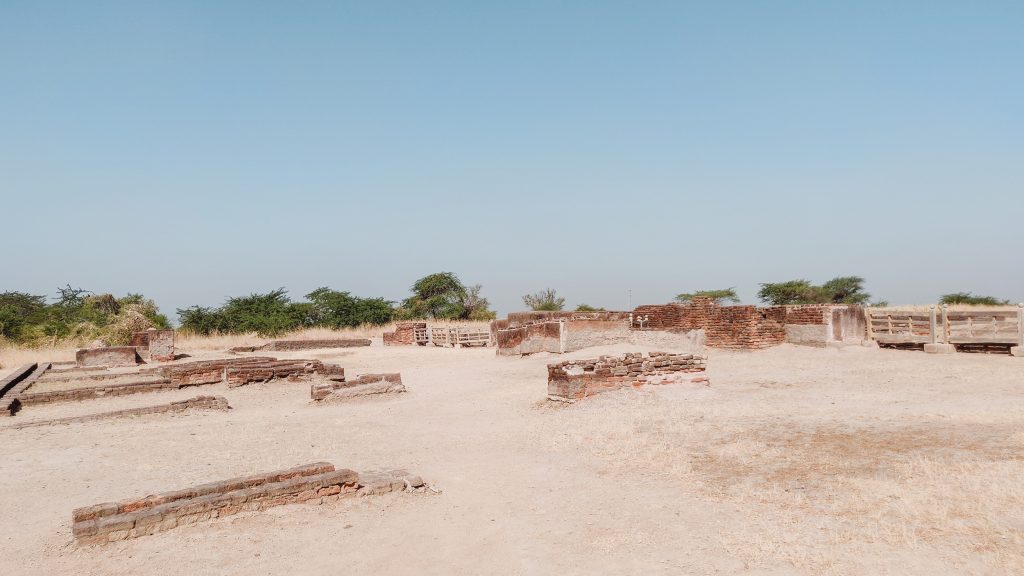
Take your time for exploring the upper town and get marvelled at the sophisticated town planning of Lothal. While it exhibited a remarkable infrastructure in the pre-historic era, we, the modern humans, are still struggling with insufficient infrastructure and drainage system even in the metro cities.
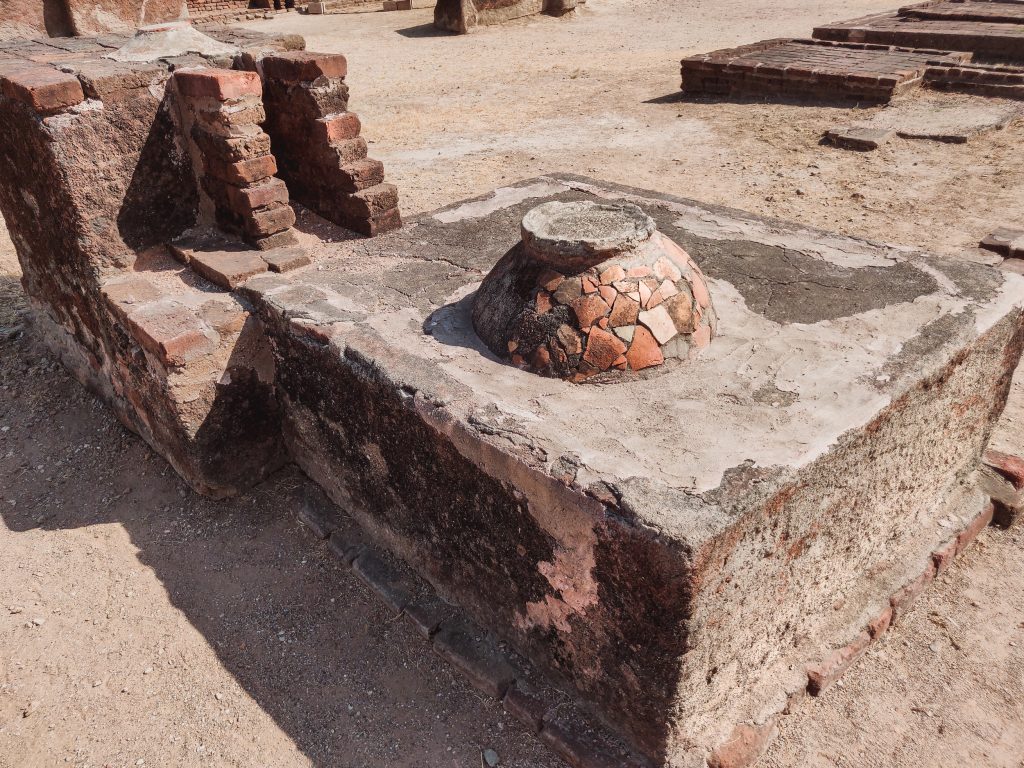
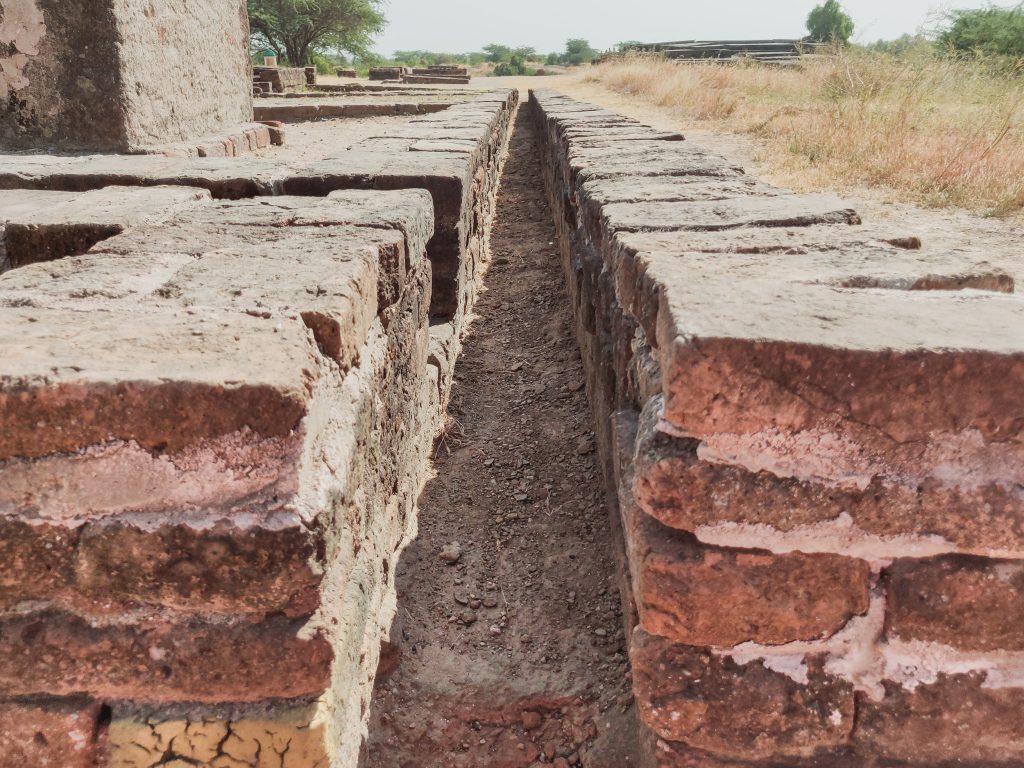
4. The Lower Town:
The lower town is a short walk from the citadel area. While going towards the lower town, check out the bead factory. 54 extremely rare seals were found here. The bead factory was crucial since it was the main industry here. Remnants of 11 rooms, courtyard, store and guardhouse can be fathomed. The cemetery is also located nearby, from where the skeletal remains of twin burial were unearthed.

The lower town was also provided with civic amenities, such as streets and lanes, and drainage system. It shows remains of residences, workshops of artisans and marketplaces.
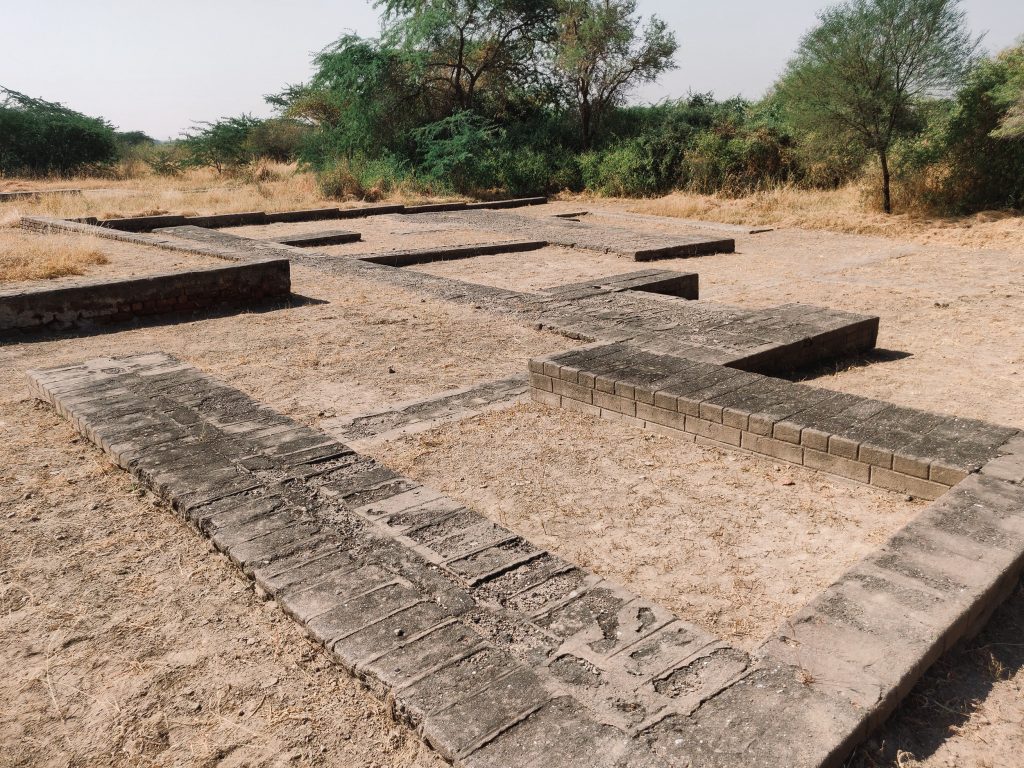
The expedition of Lothal ends with surveying what remains of the lower town. The thrill of walking on the same ground where the Harappans once treaded can hardly described in words.
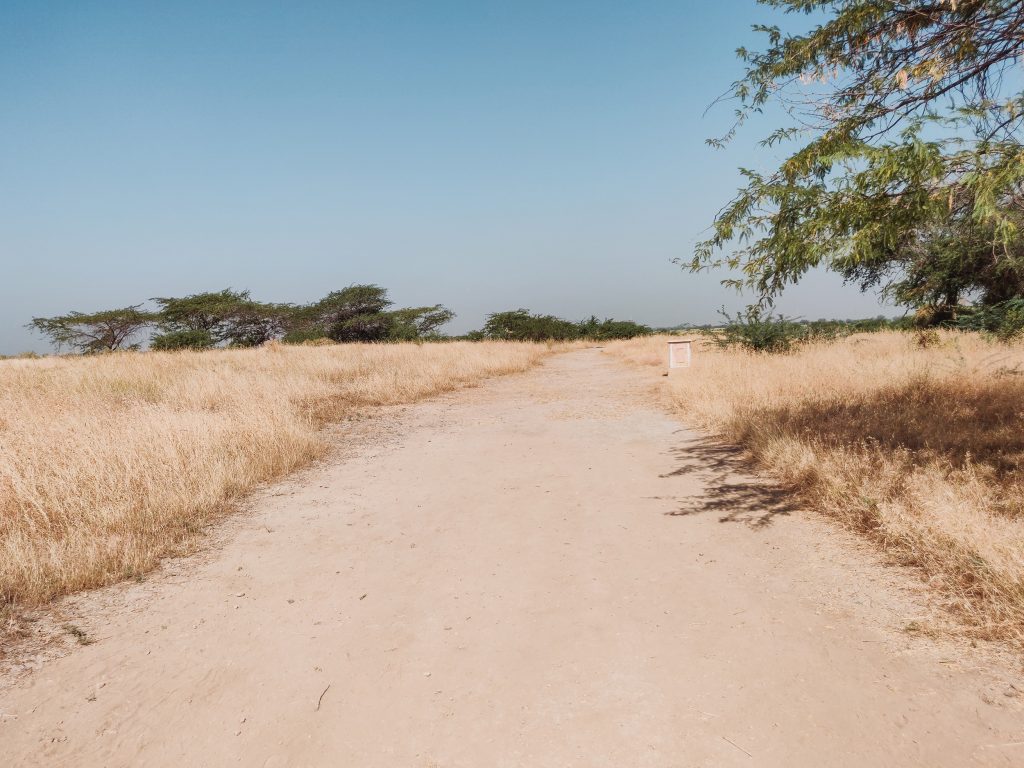
The priceless archaeological remnants in Lothal may appear voiceless; but if you give ear to them and listen intently, you will hear the myriad voices of Lothal which have been lost in the heaving world of history. The air here carries the whiff of a long – lost past, while the rustling of trees whispers the accounts of a town that once buzzed with skilled craftsmen, enterprising merchants and seafaring ships. The journey ends here, but the memories of Lothal, a mighty port town of the yore, stays on forever.
Tips for visiting Lothal:
1.The best time for visiting is in the winter months, as heat in the summer may seem excruciating as there are no shades on the excavated site.
2.Wear wide-brimmed hats and sunglasses and carry an umbrella and water. We visited at the end of October and it was quite sultry even during that time of the year.
3.The site and museum here remain closed on Fridays. On other days, it is open from 10 AM to 5 PM.
4.The entrance fee is Rs. 2 per head. It is free for children up to the age of 15.
5.There is a café in the museum premise, along with bathroom facilities.
6.You can take photographs inside the museum.
7.Please refrain from defacing the archaeological ruins here. They are already facing the wrath of nature for thousands of years and the archaeologists are painstakingly trying to preserve and protect these treasured ruins.
8.For more information, visit the official website of Gujarat Tourism.


